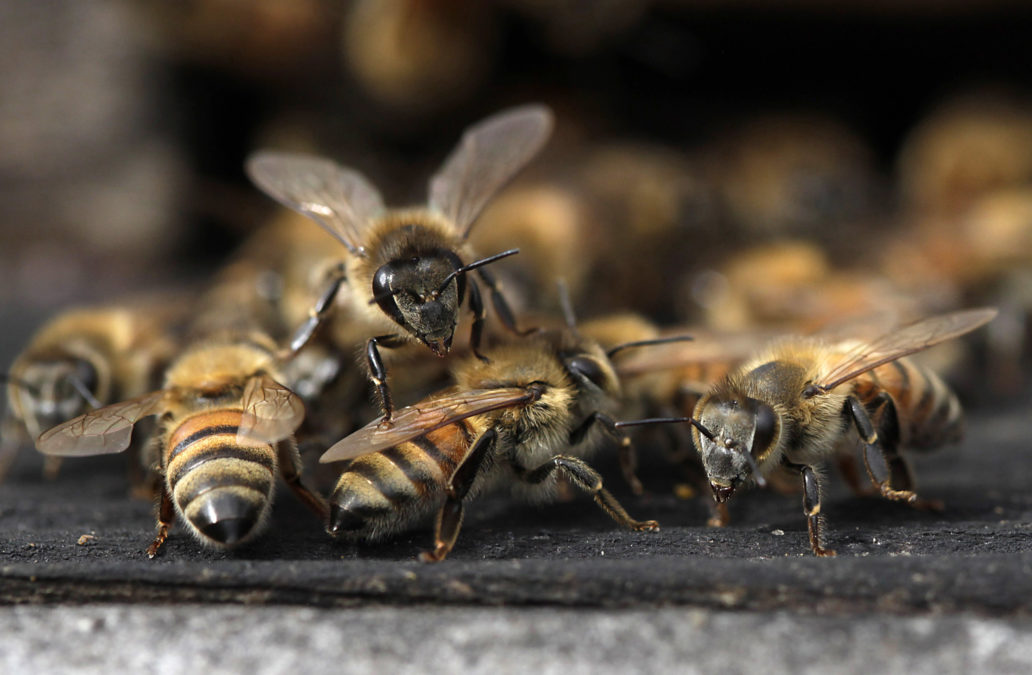 Exposure to the widely used pesticide atrazine leads to heritable changes in the gut microbiome of wasps, finds a study publishing February 4 in the journal Cell Host & Microbe. Additionally, the altered microbiome confers atrazine resistance, which is inherited across successive generations not exposed to the pesticide.
Exposure to the widely used pesticide atrazine leads to heritable changes in the gut microbiome of wasps, finds a study publishing February 4 in the journal Cell Host & Microbe. Additionally, the altered microbiome confers atrazine resistance, which is inherited across successive generations not exposed to the pesticide."After a single exposure to some chemicals -- xenobiotics -- the gut microbiome can be permanently affected," says senior study author Robert Brucker of Harvard University. "Exposure can have lasting changes to future generations even after an exposure risk is eliminated."
Agrochemicals used to fertilize crops and control pest species pose one of the greatest xenobiotic exposure risks to many organisms. The herbicide atrazine is the second most sold pesticide globally. Previous studies have shown that atrazine has multiple effects on host animals, but little is known about how environmental xenobiotic chemicals change the gut microbiome.
To address this question, Brucker and his team examined the impact of acute or continuous subtoxic atrazine exposure on the model wasp species Nasonia vitripennis across 36 generations. Analysis of the transcriptome and proteome of the wasps revealed that exposure to 300 parts per billion (ppb) of atrazine -- similar to the concentration encountered by pollinators in newly sprayed agricultural fields and streams -- may alter N. vitripennis immunity, mitochondrial function, and behavior.
In the first generation, exposure to 300 ppb of atrazine altered the bacterial community structure of wasps, resulting in an increase in microbiome diversity and overall bacterial load. Even exposure to a lower concentration of 30 ppb of atrazine caused a microbiome shift that persisted across successive generations.
When the researchers switched the offspring of the atrazine-exposed population to a non-atrazine diet for six generations, they observed that the bacterial microbiome remained most similar to that of the parents. "This result indicates that the disruption to the microbiome after acute exposure to atrazine is inherited across generations, even after exposure is removed," Brucker says.
In addition, exposure to 30 ppb of atrazine over 36 generations reduced atrazine-induced mortality by a factor of ten, and also increased tolerance to the herbicide glyphosate, despite no prior exposure to the compound. After 25 generations, a subset of the wasp population was switched to a non-atrazine diet. Remarkably, atrazine tolerance was inherited and sustained through the 36th generation.
Other experiments showed that the increased atrazine tolerance of wasps is related to their altered microbiome. For example, maintaining wasps in a germ-free environment eliminated atrazine tolerance. On the other hand, transplanting the microbiome of atrazine-exposed wasps to non-exposed wasps conferred atrazine resistance.
"Overall, we demonstrate that resistance to multiple pesticides can arise in a population that is exposed to sub-toxic concentrations, that the microbiome facilitates this resistance, and that it provides resistance against other pesticides to which the host animal has never been previously exposed," Brucker says.
In particular, atrazine exposure increased the densities of the rare gut bacteria Serratia marcescens and Pseudomonas protegens. Feeding these atrazine-degrading bacteria to wasps that had not been exposed to atrazine resulted in resistance to this pesticide.
"The shift in the microbial community following continuous atrazine exposure may be providing host resistance via detoxification, representing a rapid route of ecological adaptation for the host to cope with novel toxic challenges," Brucker says. "Pesticide exposure causes functional, inherited changes in the microbiome that should be considered when assessing xenobiotic exposure and as potential countermeasures to toxicity."
Taken together, the findings demonstrate that atrazine exposure can alter the microbial community of wasps, which can in turn directly impact host fitness across generations. Even though Nasonia wasps are not natural crop pollinators, the study could have broad implications. Wild populations of pollinators have been exposed to atrazine since the 1950s, the equivalent of dozens of generations. Notably, bacterial atrazine-metabolizing genes are also present in wild bee populations exposed to the pesticide.
"These results could reflect microbe-host-associated changes in response to xenobiotic exposure in wild honey bee population, similar to what we describe in Nasonia and considering the decades of habitual exposure, and adaptation within pollinator populations are likely to have already occurred," Brucker says. "Ultimately, these effects could have repercussions on host behavior, metabolic stress, immunocompetence, and host-microbiota regulation."
In future studies, Brucker and his team plan to examine which loci have been under selection, and how they might be implicated in toxin resistance or microbiome regulation. They are also planning on leveraging their findings to develop probiotics for honey bees to reduce multi-pesticide exposure risk.
"We can use our understanding of the host-microbiome interaction to reduce the exposure risk of all pesticides, for example, by using bacteria for cleaning up spills or as probiotics for at-risk humans, or off-target plants and animals," Brucker says. "Further host-microbiome studies of multi-generational exposure to xenobiotic compounds are needed, especially in light of the increased risk of xenobiotic exposure to humans, plants, animals, fungi, and bacteria across the globe."
No comments:
Post a Comment